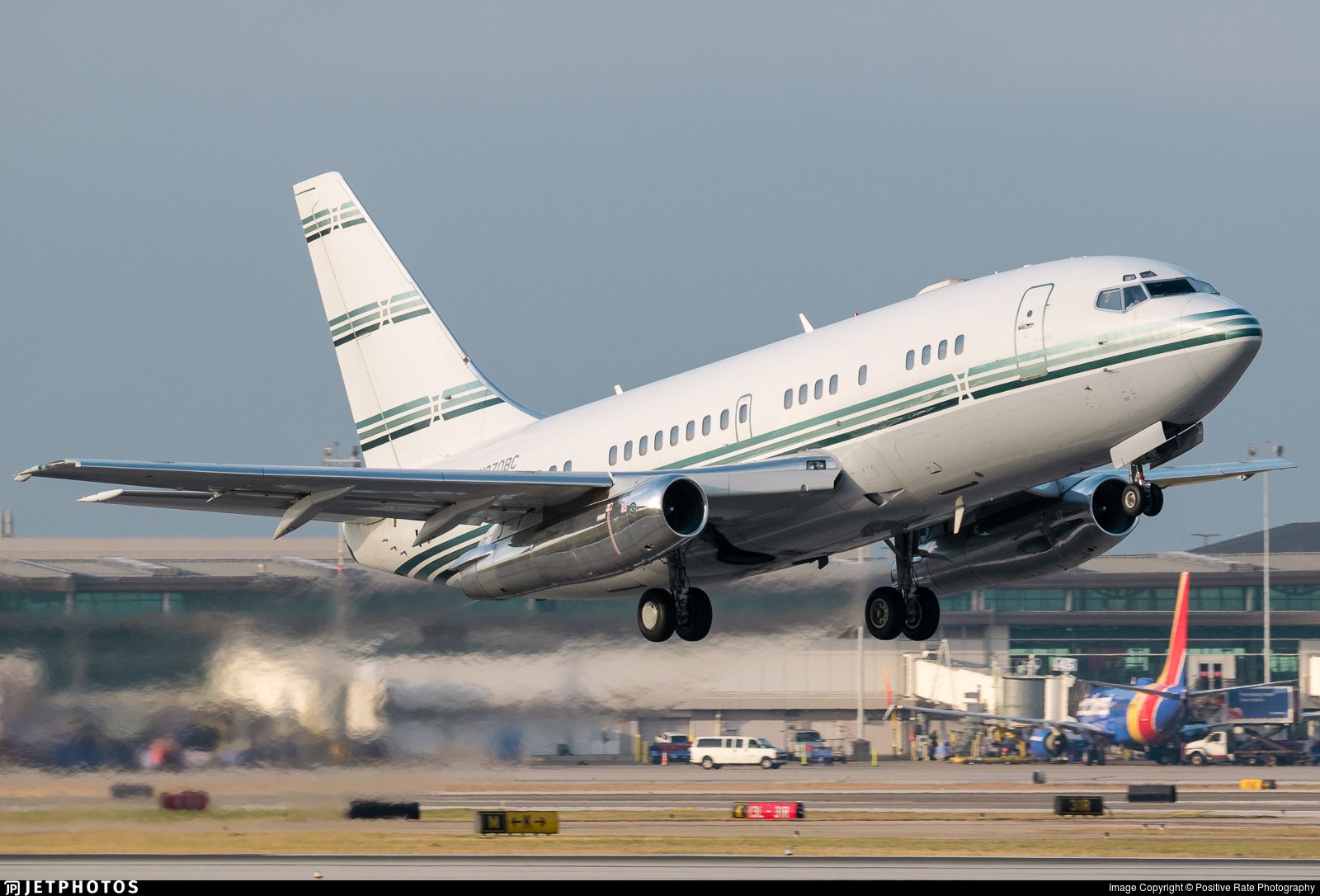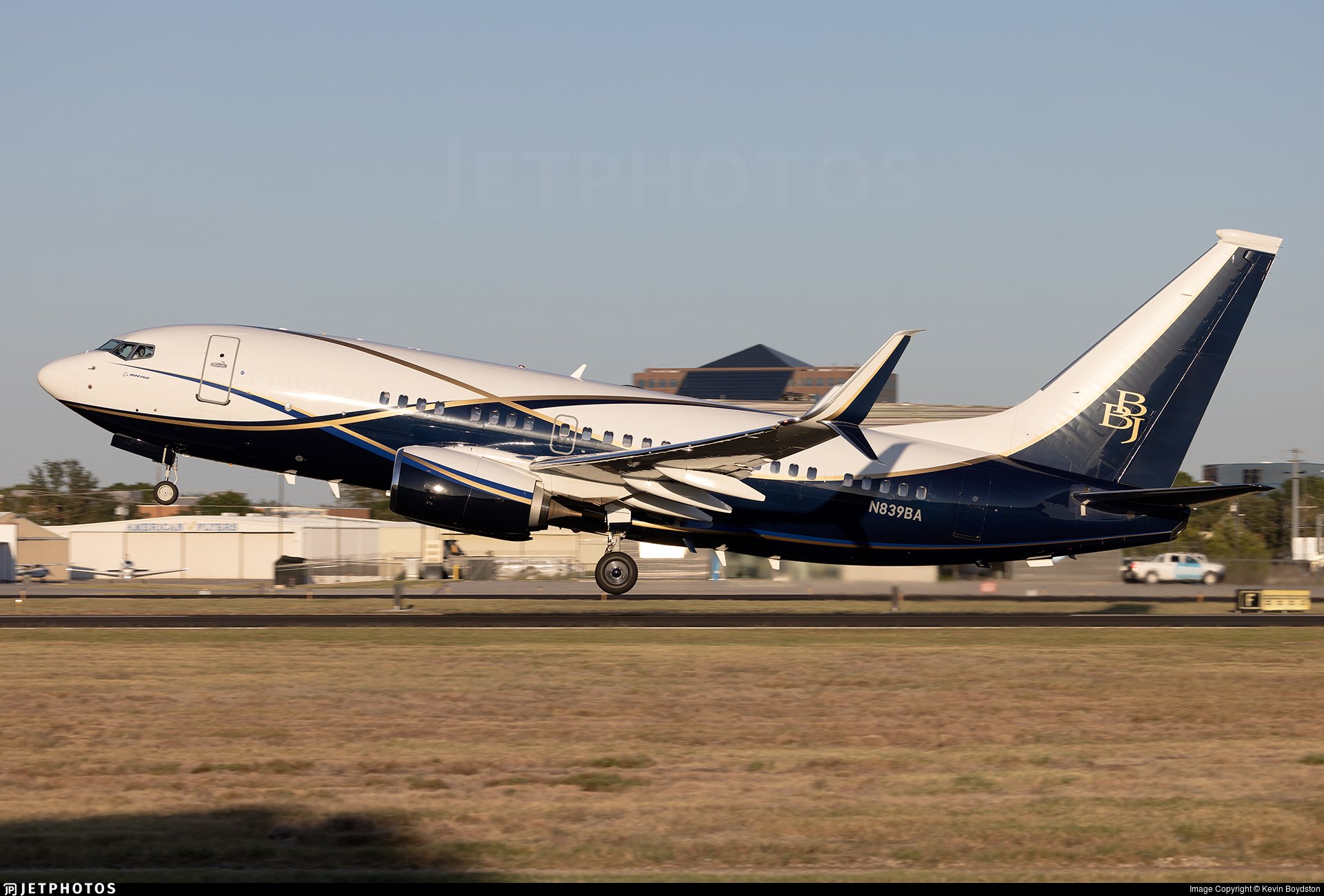Surprised nobody has brought up the sad but intruiging plane crash that happened on Sunday. Unfortunately seems like another Payne Stewart hypoxia/depressurization situation.
Reddit thread.
Blancolirio breakdown:
A big sticking point that non-jet-pilot people are getting stuck on is why the airplane turned and then continued straight, seemingly back toward its destination. That's just a geographic coincidence. The flight path itself is a consequence of the plane's speed, autopilot limitations, and FMS programming.
Basically when we program a flight plan into the plane's FMS, we type in various named points or named routes along the way. Sometimes we can program a procedure which includes numerous points, for example arrival procedures which can span hundreds of miles, dozens of waypoints, and are designed to get jets down from high altitudes and high speeds into the terminal area like a highway exit ramp. But sometimes, for smaller airports, no arrival procedure exists so our cleared flight plan will end in a slightly different manner.
This plane was supposed to land at KISP, Islip New York, and there aren't any arrivals for KISP. In a case like this, we program the various flight plan waypoints like normal but the final point in the FMS will actually be the airport itself. After that, we'll program an approach into whatever runway. This is the normal technique. Another trick to the FMS is that typically, in 98% of situations, the arrival and/or flight plan is not actually connected to the approach down to the runway. Virtually all arrivals have a final point/altitude/speed, and from there ATC will vector planes toward the approach which requires the pilots to switch autopilot modes and start following instructions. It also requires the pilots to reprogram the FMS, or "sequence" the approach, i.e. get rid of all the nonsense before it that we don't need anymore and program the approach to be the next thing the autopilot captures. This is key because if we don't sequence the approach then the FMS never knows how to connect the dots and will simply continue doing whatever its last assignment was.
In this case, the approach was never sequenced. That's obvious because usually the approach is sequenced at low altitude and low speed, only minutes before the pilots turn to intercept the approach and land. This Citation never even descended from 34,000 feet which tells me that the pilots were incapacitated probably 30+ minutes before sequencing would've normally occurred because New York controllers typically drag jets down low and slow for an annoyingly long time and distance, part of how they manage the huge amount of traffic in the area. Normally this plane probably would've started descending around the time it reached New Jersey on its way north.
What happened next was a consequence of its flight plan. The plane never descended and continued at about 400 knots over the ground, following the basic flight plan at its cruise altitude. All autopilots conduct lateral navigation by default, turning left and right, but many of them aren't equipped with vertical naviation at all. Even if they are, it needs to be engaged at the right time by the pilots, which tells me that this pilot was incapacitated even before any initial descent occurred. The final tight turn and resulting final heading toward DC is a quirk caused by the flight plan combined with the speed. I checked my charts and KISP has an approach to runway 24 with an initial fix at Calverton VOR, CCC. Neither the intercept course from CCC (278) nor the final approach course (239) result in a path leading to DC. But if you consider typical flight plan FMS programming it makes sense.
I mentioned before that there isn't any arrival into this airport which means KISP, the airport itself, would've been the last waypoint on the plan. Normally the pilots would never actually fly directly to the airport because obviously they want to land there, not overfly it. That's where sequencing the FMS comes in. As the pilots are maybe 10-15 miles from the airport ATC would starting giving them vectors to fly, and at this point they'd sequence the approach in the FMS, deleting their final waypoints including the airport, and make the approach itself the next task for the FMS to follow. But none of that ever happened. Instead, the plane simply followed the plan, and I can assume what it was. The last two points on the flight plan would've been CCC followed by KISP. If you draw a straight line course from CCC to KISP you get a 255 heading which tracks directly over DC, almost the exact same line the plane actually followed. The FMS was simply doing what it was told - its last instructions where to go from CCC to KISP, and it did that, and kept on going in a straight line.
The autopilot obviously has speed data for the plane too so the reason the turn radius was so large is because the plane was going 400 knots, at least twice as fast as it would normally make this turn at low altitude. The plane's track never actually crossed CCC because it had to anticipate the turn toward KISP, so it turned very early, a nice smooth arc, which resulted in crossing KISP on a 255 course and then continuing on until it ran out of fuel.

So that explains why the plane continued southwest in a straight line on that course. No, it wasn't programmed to go back to its destination, that's not how we program an FMS. No it wasn't flying the IAF because we don't fly IAFs or procedure turns in jets if we don't have to, and no it wasn't attempting an approach because it was never sequenced. No it wasn't some sort of failsafe and no it wasn't anything nefarious that had to do with Washington DC. It was simply an FMS doing what an FMS does, interpolating a high speed turn and then tracking the course between its final two flight plan points. Total geographic coincidence that it pointed to DC.
So the flight part is all about numbers and procedure, pretty easy to figure out. Why everybody died is another story but because pressurization loss events - like the Payne Stewart crash in 1999 - have happened multiple times in the past. Radio records will give us a better idea of when loss of communication occurred but we can assume everybody in the plane - or at least the pilot which is an even scarier thought - was dead at least 30 minutes before their planned arrival time.



 aircraftbuyer.net
aircraftbuyer.net

aircraftbuyer.net

aircraftbuyer.net

